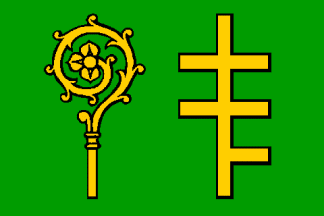
jablo.gif)
Alternative Flag and Arms of Jabłonna, Poland
2) The name given to a French military colour whose staff displayed a finial in the form of a gilded eagle, used during the Napoleonic era and later Second Empire and based on the eagles of ancient Rome (see 1) above, finial and also colour 2)).
3) In (particularly but not exclusively Continental European) heraldry the image of a bird of prey – see displayed and rising (also armed, langued and membered).
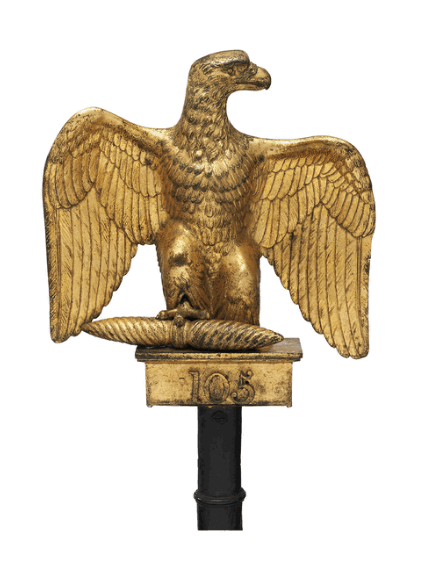

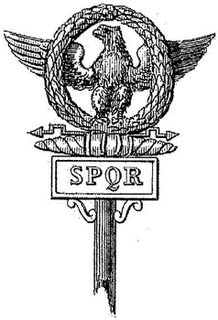
Eagle of 105th Regiment of the Line 1815, France (ageofrevolution.org);
Camp Flag, 1st Dragoon Guards UK;
Eagle Standard of a Roman Legion (source)
Please note with regard to 2) that during the Napoleonic era the eagle-topped staff alone usually acted as a regimental standard whilst on campaign, with the colour itself being retained at a regimental depot.
2) A version of the US flag whose canton consisted of the great seal and largely (but not exclusively) in use as by the military from 1783–1912 – the eagle canton flag (see also Betsy Ross flag, Franklin flag, great star flags, old glory, quincunx, star-spangled banner, stars and bars and stars and stripes).

Typical Eagle Standard c1824
![[east-west diagonal]](../images/v/vx-br-rs.gif)
![[east-west diagonal]](../images/v/vx-cz-br-bc.gif)
The flag of Rio Grande do Sul, Brazil; Flag of
Břidličná, Czechia
![[Church of Scotland ]](../images/v/vx-churchscot.gif)
Flag of the Church of Scotland (Graham Bartram)
3) In strict heraldic practice the term that should be (but rarely if ever is) used in place of fimbriation when a charge so fimbriated touches the edge of a shield, banner of arms or flag.

du-bl.gif)
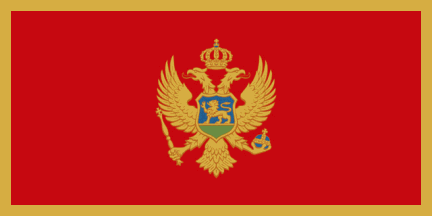
Flag and Arms of Blato, Croatia;
Flag of Montenegro
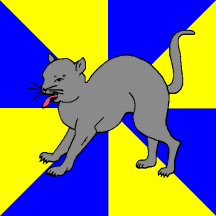
Flag of Vaugondry, Switzerland
2) In Canadian usage now obsolete, a pennant awarded for efficiency in the training of air crew during WWII.
3) In US usage now obsolete, a pennant awarded by the US Government during WWII for excellence in the production of military equipment.
4) See award flag.

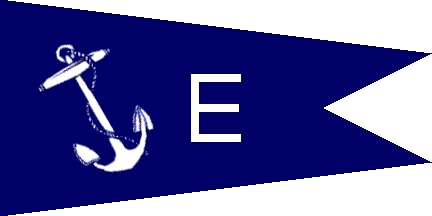
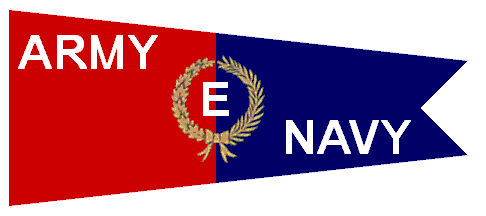
Efficiency Pennant 1941–1945, Canada;
E Pennants: US Navy until 1942; US Army/Navy 1942–1945
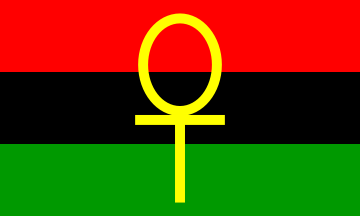
Flag used by the Music Group X Clan
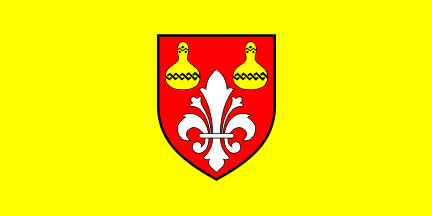
vu-gr.gif)
Flag and Arms of Gradište, Croatia
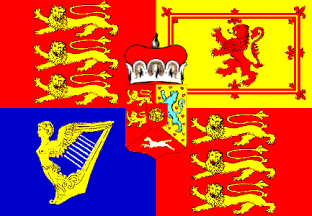
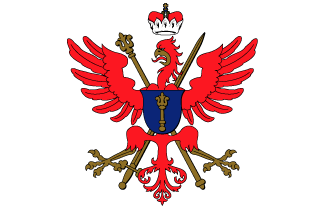
Royal Standard of the UK and Electoral Standard of Hanover
1801–1816; Ensign of Brandenburg late 17th century
![[Bautzen]](../images/v/vx-de-bz.gif)
![[embattled ]](../images/v/vx-de-oh-ol.gif)
![[embattled ]](../images/v/vx-pt-ohpao.gif)
Flag of Bautzen, Germany;
Flag of Oldenburg in Holstein, Germany;
Flag of Avô, Portugal
![[Trins circle]](../images/v/vx-ch-gr-tr.gif)
![[degen]](../images/v/vx-ch-gr192.gif)
![[Duvin]](../images/v/vx-ch-gr193.gif)
Flag of former Trins circle; Flag of Degen;
Flag of Duvin, Switzerland
![[Roemerswil]](../images/v/vx-ch-lu028.gif)
![[Orselina]](../images/v/vx-ch-ti085.gif)
![[Fuerstenau]](../images/v/vx-ch-gr029.gif)
Flag of Römerswil, Switzerland;
Flag of Orselina, Switzerland;
Flag of Fürstenau, Switzerland
Please note that the above phrases have been introduced by the Editors since, as far as can be discovered, this type of charge has never been accurately blazoned in correct heraldic language.
![[emblazoned example]](../images/v/vx-dukerutland.gif)
![[emblazoned example]](../images/v/vx-dukeatholl.gif)
![[emblazoned example]](../images/v/vx-earlwarwick.gif)
Arms of the Duke of Rutland, UK
(Wikimedia); Arms of the 7th to 9th Duke of Atholl
(Wikimedia); Arms of the 16th Earl of Warwick, England (Wikimedia)
![[Afghanistan]](../images/v/vx-af)1974.gif)
![[Kyrgyzstan]](../images/v/vx-su)kg.gif)
![[Bhutan]](../images/v/vx-bt).gif)
Emblems of Afghanistan 1974–1978,
Kyrgyzstan 1937–1994 and
Bhutan
- Emblem, Military or Governmental/Departmental
- A design of heraldic or other symbols which is not a set of armorial bearings/coat of arms or a badge as defined herein, but which is used to denote a particular branch or division of the military, or a specific department within a government structure – but see badge 3) (also camp flag, coat of arms, emblem 2), emblem, state or national, charge, logo, military crest and ship’s crest).
![[Army Flag]](../images/v/vx-za^ay03.gif)
![[Ukraine air force emblem]](../images/v/vx-ua^af).gif)
Army Flag/Emblem, RSA; Air Force Emblem, Ukraine; Flag of the Immigration Service/Emblem, Timor-Leste
- Emblem, State, National, Presidential, Provincial or Royal
- A design of heraldic or other symbols which is not a set of armorial bearings/coat of arms or a badge as defined herein, but which is used to fulfil the function of a coat of arms in a national or provincial context – see notes below (also badge, charge, coat of arms, emblem 2) emblem, military or governmental/departmental, royal emblem and seal).
![[national emblem]](../images/v/vx-mx).gif)
![[Presidential Flag/Emblem]](../images/v/vx-am_pres.gif)
![[Royal/National Emblem]](../images/v/vx-th)garud.gif)
National Emblem, Mexico; Presidential Flag/Emblem, Armenia; Royal/National Emblem, ThailandNotes
a) National/provincial emblems often epitomise the individuality and/or spirit of the state, and can be placed on a flag to distinguish it from others, which may be similar – as, for example, those on the civil ensign of Italy and national flag of Mexico.
b) The emblems of some countries such as those of Mexico or of Italy (as shown above) – whilst conforming to the definition as detailed herein – are officially described as “coats of arms”.
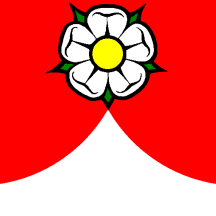
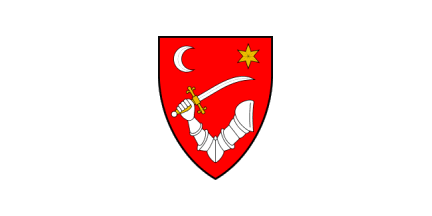
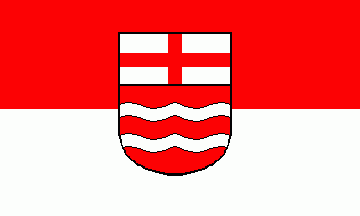
Flag of Seftigen, Switzerland;
Flag of Velika, Croatia;
Old Flag of Paderborn, Germany
![[embraced example]](../images/v/vx-hr)zg-sn.gif)
![[embraced example]](../images/v/vx-hr-zg-sn.gif)
Arms and Flag of Sveta Nedelja, Croatia
![[embroidered example]](../images/v/vx-es-tf-lc.jpg)
Embroidered Detail on the Flag of San Cristóbal de la Laguna, Tenerife, Spain (Klaus-Michael Schneider)
![[empale example]](../images/v/vx-fr-89-sf.gif)
Flag of Saint-Florentin, France
![[emphasized]](../images/v/vx-hr-vz-dm.gif)
![[emphasized]](../images/v/vx-hr)vz-dm.gif)
Arms and Flag of Martijanec, Croatia

![[ecclesiastic banner]](../images/v/vx-churchbanner.jpg)
![[Immigration Service Flag]](../images/v/vx-tl_smig.jpg)